Abstract
1. The effects of the intravenous administration of dipyridamole (0·25 mg/kg) were examined in a canine preparation that enabled simultaneous measurements to be made of blood flow in ischaemic and in essentially normal areas of the myocardium and also of oxygen handling (availability, consumption and extraction) in both these regions.
2. When administered to dogs anaesthetized with trichlorethylene 2-3 h after acute ligation of the descending branch of the left coronary artery, dipyridamole markedly increased blood flow in essentially normal regions (left circumflex flow) but failed to increase flow in the area supplied by the ligated vessel (measured by 133xenon clearance and by retrograde flow). In five of the six animals definite decreases in flow (` stealing ') were observed in the ischaemic region. These flow changes were related to the decreased trans-ventricular perfusion pressure (diastolic peripheral coronary pressure minus left ventricular end-diastolic pressure) and were accompanied by electrocardiographic evidence of increasingly severe myocardial ischaemia. The results support the suggestion that only increasing the perfusion gradient will usefully improve blood flow (and hence oxygen availability) to the acutely ischaemic myocardium.
3. Despite these effects on ischaemic muscle blood flow, the oxygen tension of the blood draining the infarcting muscle was markedly elevated. The conclusion is drawn that dipyridamole decreases the efficiency of the myocardial circulation by opening up vessels that do not take part in tissue exchange.
Full text
PDF
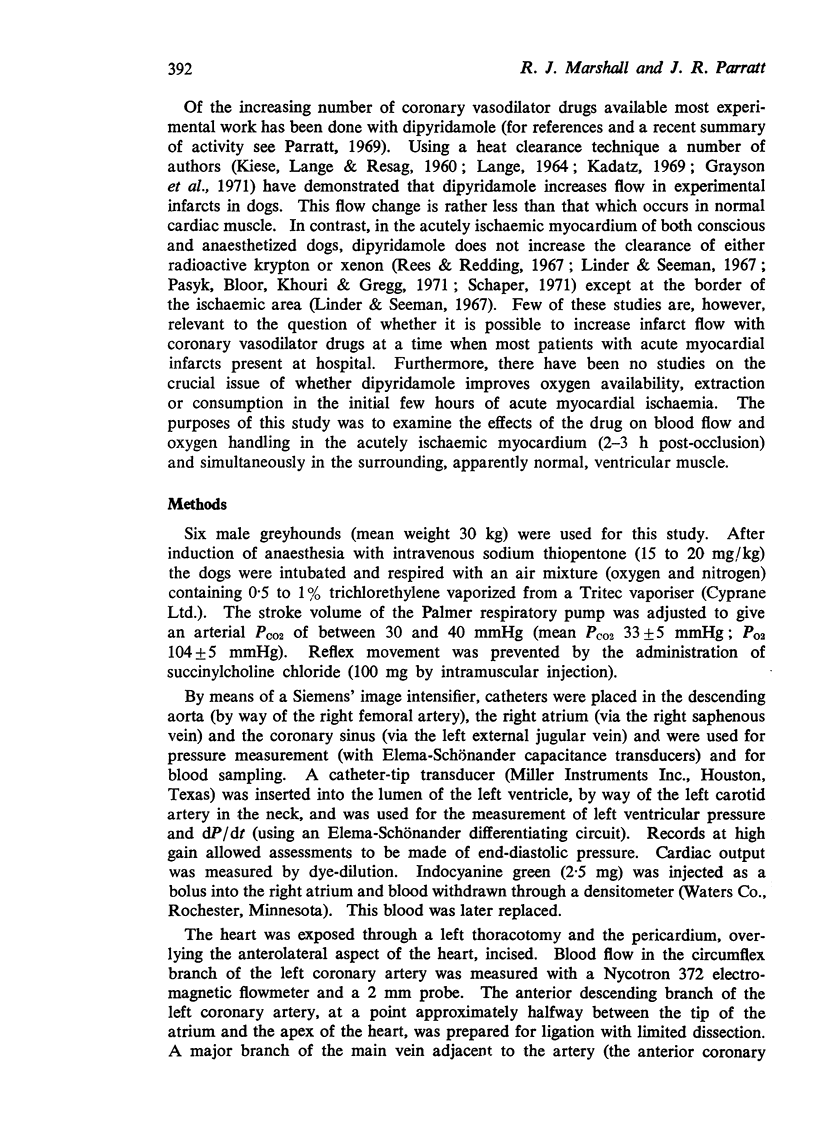
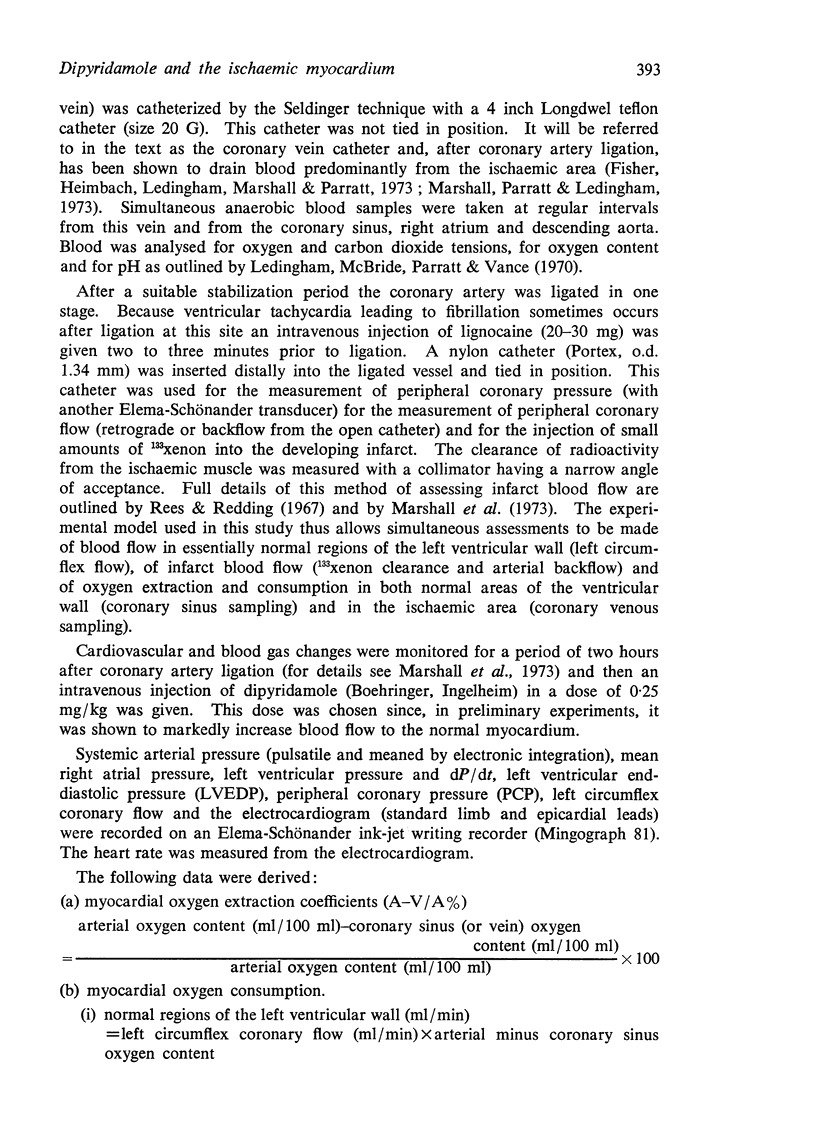
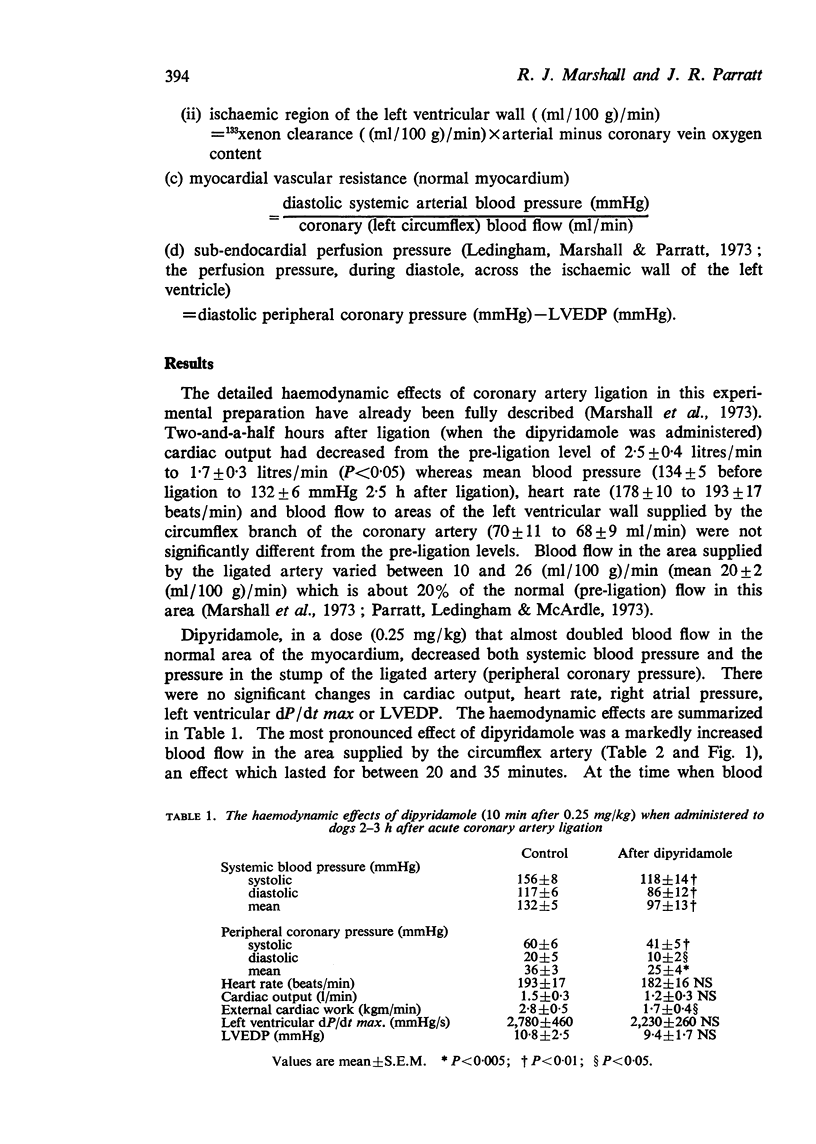
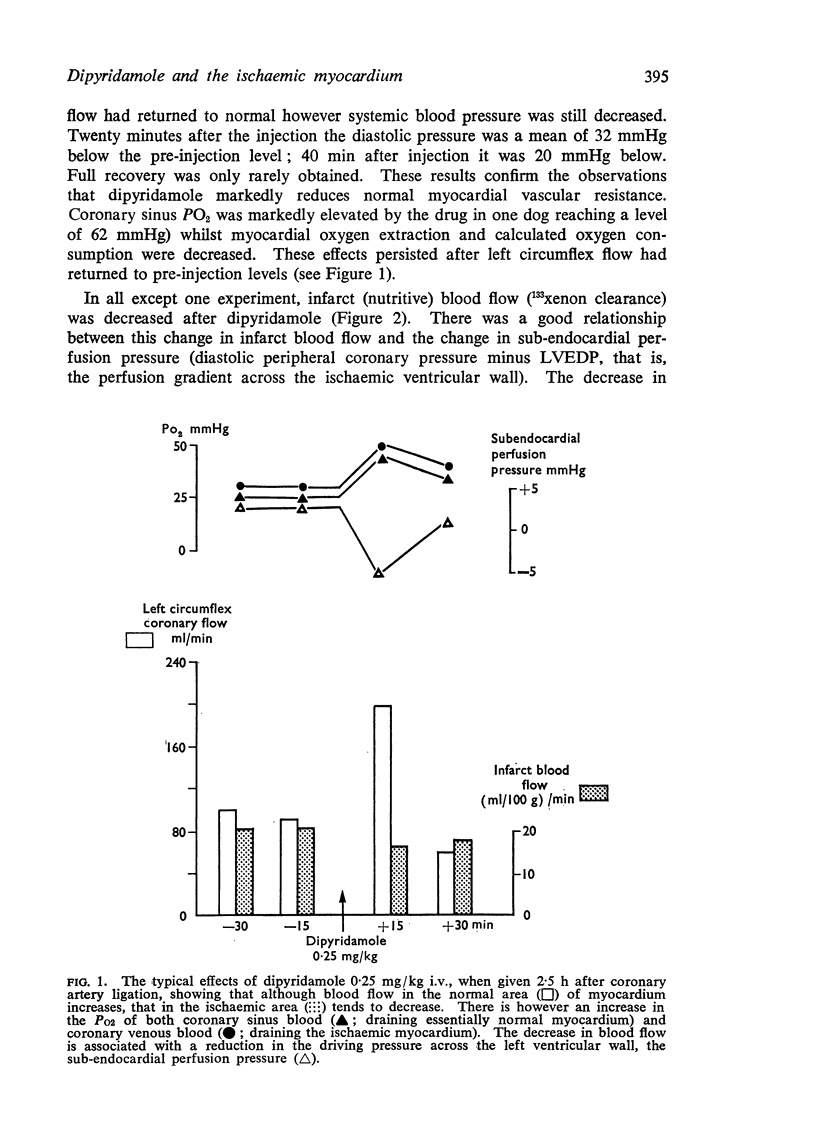

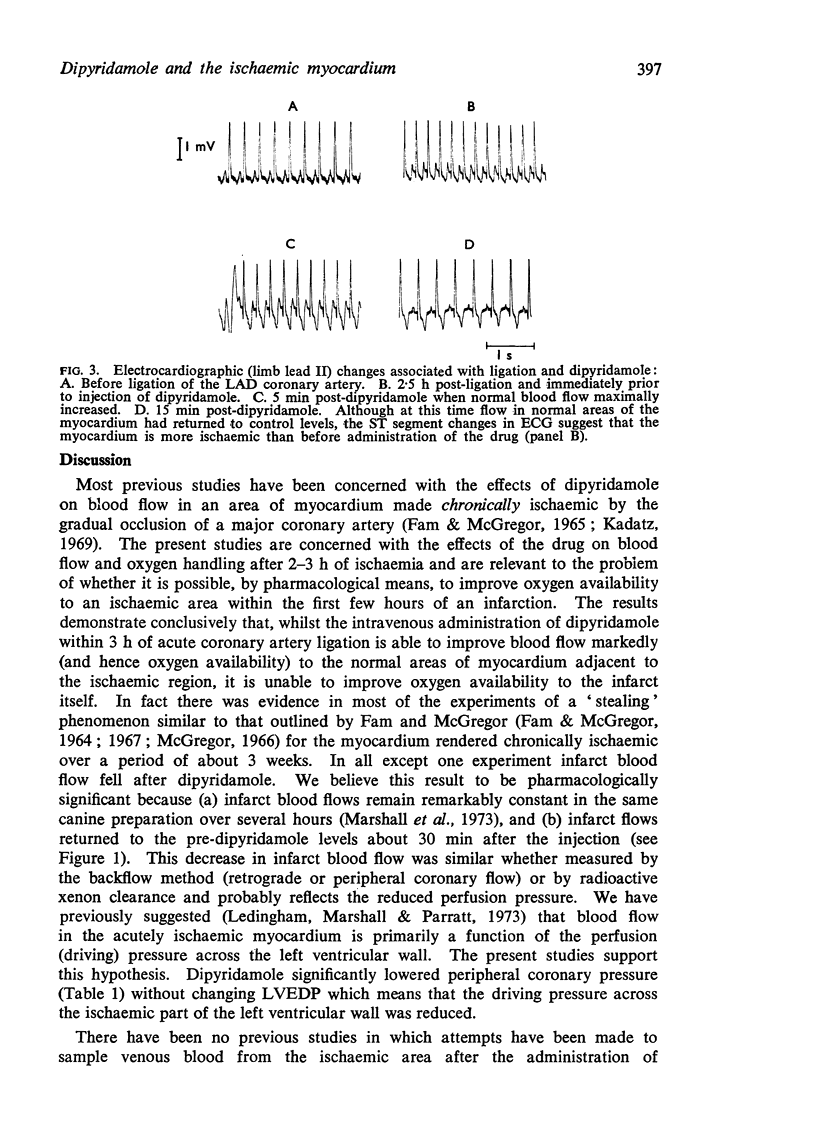

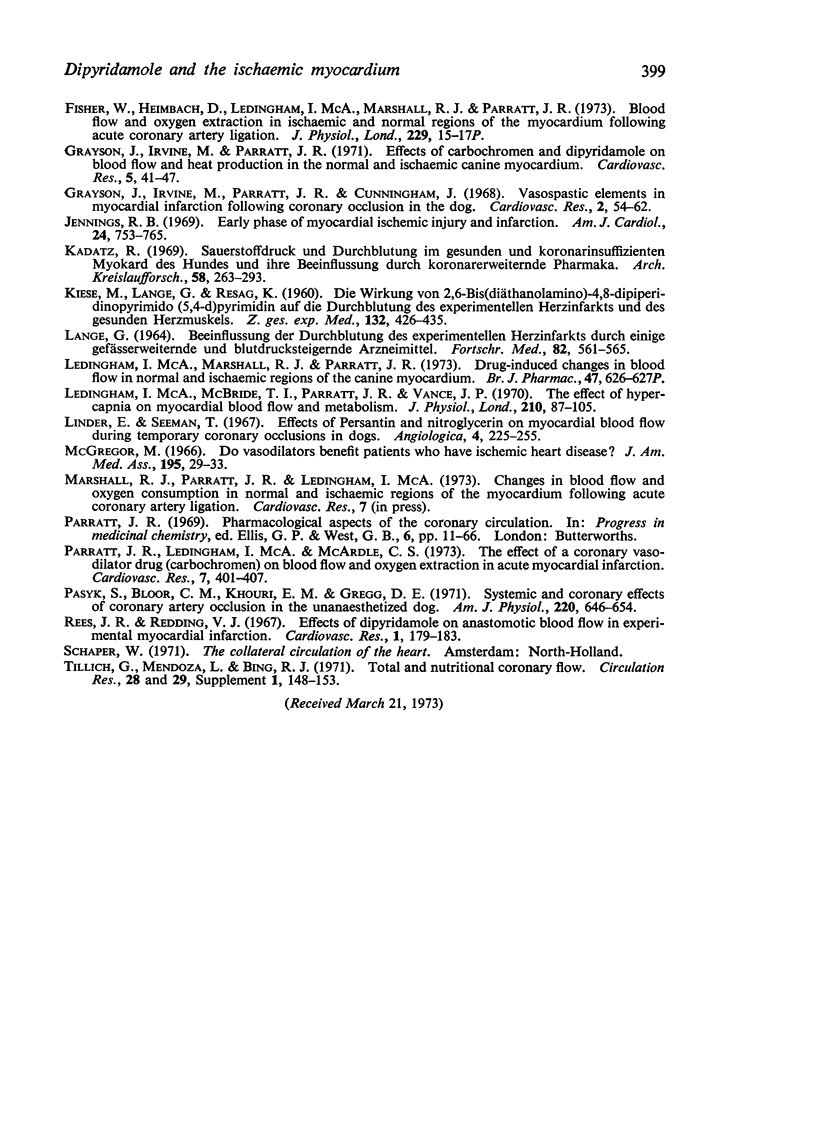
Selected References
These references are in PubMed. This may not be the complete list of references from this article.
- FAM W. M., MCGREGOR M. EFFECT OF CORONARY VASODILATOR DRUGS ON RETROGRADE FLOW IN AREAS OF CHRONIC MYOCARDIAL ISCHEMIA. Circ Res. 1964 Oct;15:355–364. doi: 10.1161/01.res.15.4.355. [DOI] [PubMed] [Google Scholar]
- Grayson J., Irvine M., Parratt J. R., Cunningham J. Vasospastic elements in myocardial infarction following coronary occlusion in the dog. Cardiovasc Res. 1968 Jan;2(1):54–62. doi: 10.1093/cvr/2.1.54. [DOI] [PubMed] [Google Scholar]
- Grayson J., Irvine M., Parratt J. R. Effects of carbochromen and dipyridamole on blood flow and heat production in the normal and ischaemic canine myocardium. Cardiovasc Res. 1971 Jan;5(1):41–47. doi: 10.1093/cvr/5.1.41. [DOI] [PubMed] [Google Scholar]
- Jennings R. B. Early phase of myocardial ischemic injury and infarction. Am J Cardiol. 1969 Dec;24(6):753–765. doi: 10.1016/0002-9149(69)90464-0. [DOI] [PubMed] [Google Scholar]
- KIESE M., LANGE G., RESAG K. [5,4-d] pyrimidine on the circulation of experimental myocardial infarct and healthy myocardium]. Z Gesamte Exp Med. 1960;132:426–435. [PubMed] [Google Scholar]
- Kadatz R. Sauerstoffdruck und Durchblutung im gesunden und koronarinsuffizienten Myokard des Hundes und ihre Beeinflussung durch koronarerweiternde Pharmaka. Arch Kreislaufforsch. 1969 Mar-Apr;58(3):263–293. [PubMed] [Google Scholar]
- Ledingham I. M., Marshall R. J., Parratt J. R. Drug-induced changes in blood flow in normal and ischaemic regions of the canine myocardium. Br J Pharmacol. 1973 Mar;47(3):626P–627P. [PMC free article] [PubMed] [Google Scholar]
- Ledingham I. M., McBride T. I., Parratt J. R., Vance J. P. The effect of hypercapnia on myocardial blood flow and metabolism. J Physiol. 1970 Sep;210(1):87–105. doi: 10.1113/jphysiol.1970.sp009197. [DOI] [PMC free article] [PubMed] [Google Scholar]
- Linder E., Seeman T. Effects of persantin and nitroglycerin on myocardial blood flow during temporary coronary occlusions in dogs. Angiologica. 1967;4(5):225–255. doi: 10.1159/000157708. [DOI] [PubMed] [Google Scholar]
- Parratt J. R., Ledingham I. M., McArdle C. S. Effect of a coronary vasodilator drug (carbochromen) on blood flow and oxygen extraction in acute myocardial infarction. Cardiovasc Res. 1973 May;7(3):401–407. doi: 10.1093/cvr/7.3.401. [DOI] [PubMed] [Google Scholar]
- Parratt J. R. Pharmacological aspects of the coronary circulation. Prog Med Chem. 1969;6:11–66. doi: 10.1016/s0079-6468(08)70196-6. [DOI] [PubMed] [Google Scholar]
- Pasyk S., Bloor C. M., Khouri E. M., Gregg D. E. Systemic and coronary effects of coronary artery occlusion in the unanesthetized dog. Am J Physiol. 1971 Mar;220(3):646–654. doi: 10.1152/ajplegacy.1971.220.3.646. [DOI] [PubMed] [Google Scholar]
- Rees J. R., Redding V. J. Effects of dipyridamole on anastomotic blood flow in experimental myocardial infarction. Cardiovasc Res. 1967 Apr;1(2):179–183. doi: 10.1093/cvr/1.2.179. [DOI] [PubMed] [Google Scholar]
- Tillich G., Mendoza L., Bing R. J. Total and nutritional coronary flow. Circ Res. 1971 Jan;28(Suppl):148+–148+. [PubMed] [Google Scholar]


